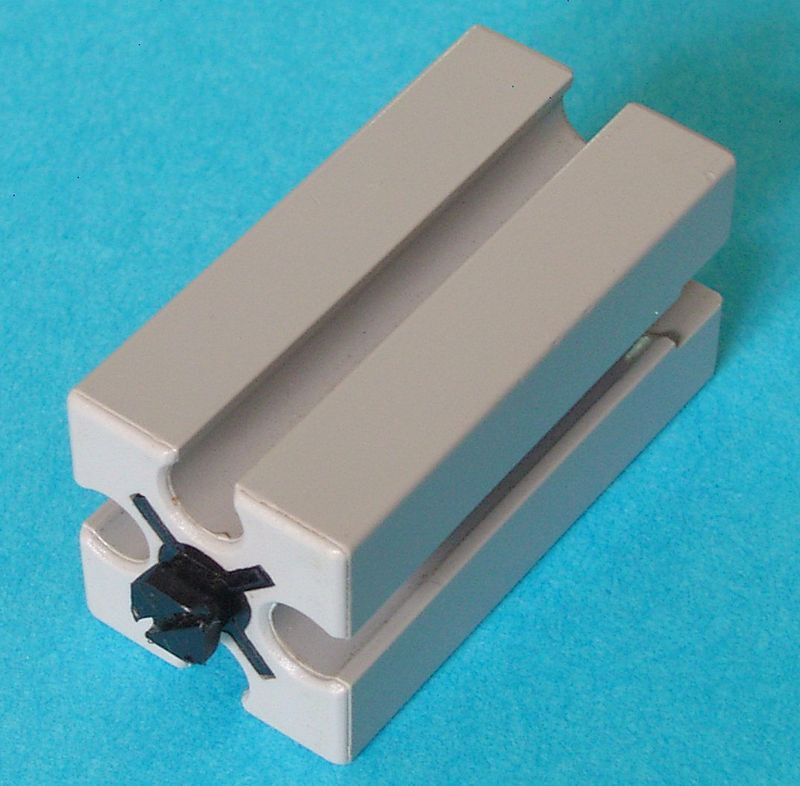fischertechnik (рус. фишертехник, по-немецки пишется с маленькой буквы) — пластмассовый развивающийконструктор для детей, подростков и студентов, изобретённый профессором Артуром Фишером[1] в 1964 году[2]. Наборы fischertechnik выпускает немецкая фирма fischertechnik GmbH. Она входит в состав крупного холдинга fischerwerke GmbH & Co.KG, дочерние фирмы которого выпускают крепёж, крепежный инструмент, детали для автомобилей и различные изделия из пластмассы.
Конструкторы fischertechnik часто используются для демонстрации принципов работы механизмов и машин в средних,специальных и высших учебных заведениях, а также для моделирования производственных процессов ипрезентационных целей.
Основным элементом конструктора является блок с пазами и выступом типа «ласточкин хвост». Такая форма дает возможность соединять элементы практически в любых комбинациях.
Также в комплекты конструкторов входят программируемые контроллеры, двигатели, различные датчики и блоки питания, что позволяет приводить механические конструкции в движение, создавать роботов и программировать их с помощью компьютера.
https://ru.wikipedia.org/wiki/Fischertechnik
About the goods
Fischertechnik is a brand of construction toy. It was invented by Artur Fischer and is produced by fischertechnik GmbH inWaldachtal, Germany. Fans[who?] often refer to Fischertechnik as "FT" or "ft". It is used in education[citation needed] for teaching about simple machines, as well as motorization and mechanisms. The company also offers computer interface technology, which can be used to teach the theory of automation and robotics.
The company is a German manufacturer of fasteners, and the original Fischertechnik set was intended as a Christmas (1964) novelty gift for engineers and buyers at industrial clients. The gifts proved popular, so for Christmas 1965, the company introduced its first building set for retail sale in Germany. In part, it has been claimed to foster education and interest in technology and science among the young. By about 1970, the construction sets were being sold in the United States at upscale toy retailers such as FAO Schwarz.
The basic building blocks were of channel-and-groove design, manufactured of hard nylon. Basic blocks came in 15×15×15 and 15×15×30 millimeter sizes. A peg on one side of each block could be attached into a channel on any of the other five sides of a similar block, producing a tightly-fitting assembly that could assume almost any shape. Red cladding plates could be used to complete the exterior surfaces of the models.
Many plastic Fischertechnik girders look like miniature versions of extruded aluminum framing of the T-slot nut design. A few Fischertechnik girders actually are made of aluminum.[3] Other companies make Fischertechnik-compatible aluminum bars of any desired length.[4]
The original blocks were characteristically gray with red accessories such as wheels and angled blocks. Electric motors, power sources, and gears were soon added to mobilize models. Additional building pieces such as struts were added in “statics” sets, allowing the construction of realistic-looking bridges and tower cranes. To teach the physics of such models, some sets included measuring devices, so that trigonometric vectors could be calculated and tested.
The early sets were sophisticated and were often used by engineers to teach and simulate industrial robotics. This use was advanced by the addition of electrical and electronic components such as microswitches, magnetic-sensing reed switches, and photocells, which sensed position and provided input to motors. With the basic electronic block (Grundbaustein), which contained an operational amplifier, Schmitt trigger and delay line circuits could be built. In the late 1970s, electronic binary-logic modules (AND, NAND, OR, NOR, flip-flops) were introduced, so that models could make some branching decisions. Pneumatic devices were made available to provide gripping ability. By the late 1980s, process-control CPU modules were added, so that sequences movements could be preprogrammed and executed, first using “Lucky Logic” (LLWIN) software.
https://en.wikipedia.org/wiki/Fischertechnik

















